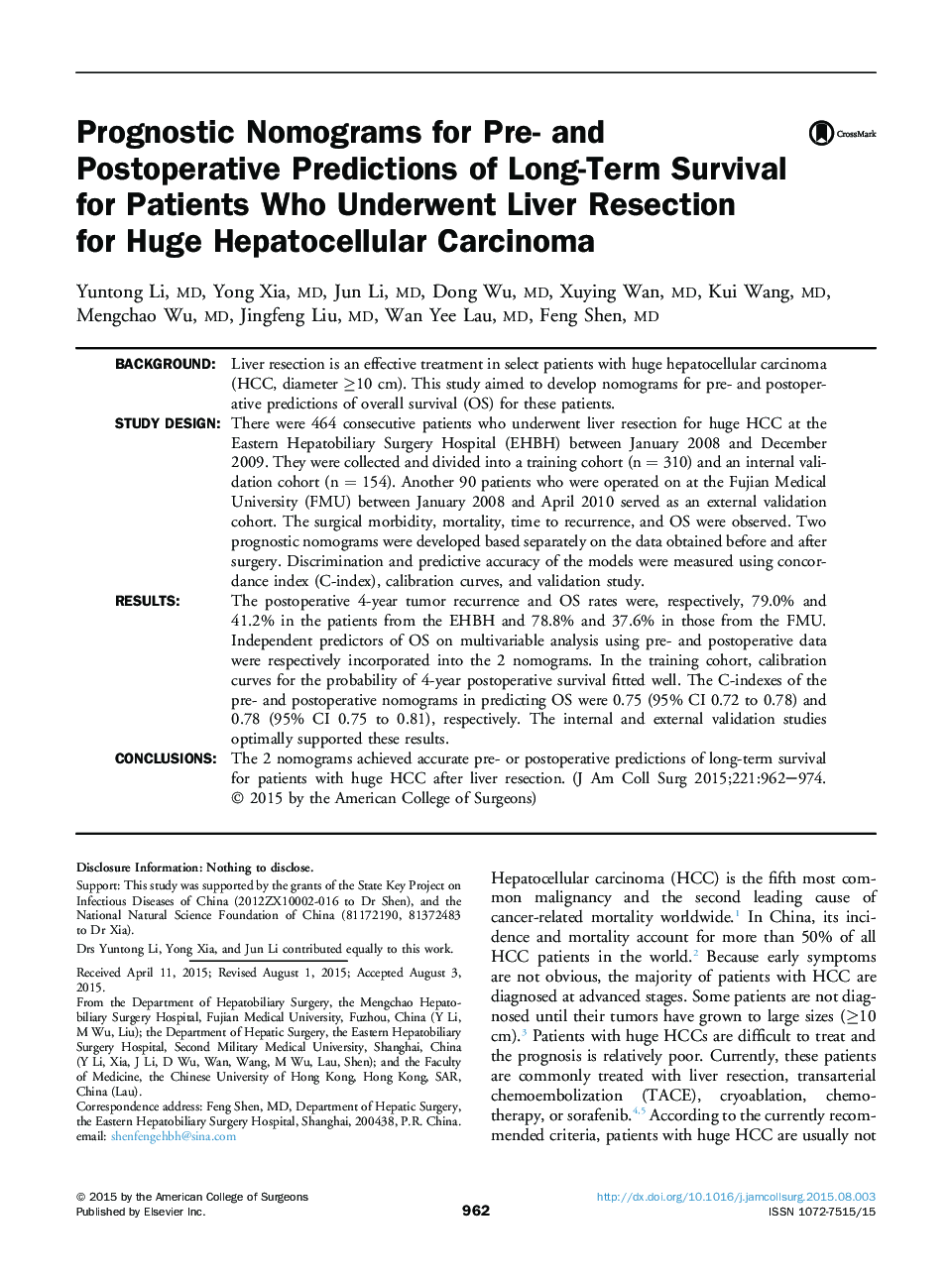| Article ID | Journal | Published Year | Pages | File Type |
|---|---|---|---|---|
| 6252516 | Journal of the American College of Surgeons | 2015 | 17 Pages |
BackgroundLiver resection is an effective treatment in select patients with huge hepatocellular carcinoma (HCC, diameter â¥10 cm). This study aimed to develop nomograms for pre- and postoperative predictions of overall survival (OS) for these patients.Study DesignThere were 464 consecutive patients who underwent liver resection for huge HCC at the Eastern Hepatobiliary Surgery Hospital (EHBH) between January 2008 and December 2009. They were collected and divided into a training cohort (n = 310) and an internal validation cohort (n = 154). Another 90 patients who were operated on at the Fujian Medical University (FMU) between January 2008 and April 2010 served as an external validation cohort. The surgical morbidity, mortality, time to recurrence, and OS were observed. Two prognostic nomograms were developed based separately on the data obtained before and after surgery. Discrimination and predictive accuracy of the models were measured using concordance index (C-index), calibration curves, and validation study.ResultsThe postoperative 4-year tumor recurrence and OS rates were, respectively, 79.0% and 41.2% in the patients from the EHBH and 78.8% and 37.6% in those from the FMU. Independent predictors of OS on multivariable analysis using pre- and postoperative data were respectively incorporated into the 2 nomograms. In the training cohort, calibration curves for the probability of 4-year postoperative survival fitted well. The C-indexes of the pre- and postoperative nomograms in predicting OS were 0.75 (95% CI 0.72 to 0.78) and 0.78 (95% CI 0.75 to 0.81), respectively. The internal and external validation studies optimally supported these results.ConclusionsThe 2 nomograms achieved accurate pre- or postoperative predictions of long-term survival for patients with huge HCC after liver resection.
